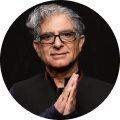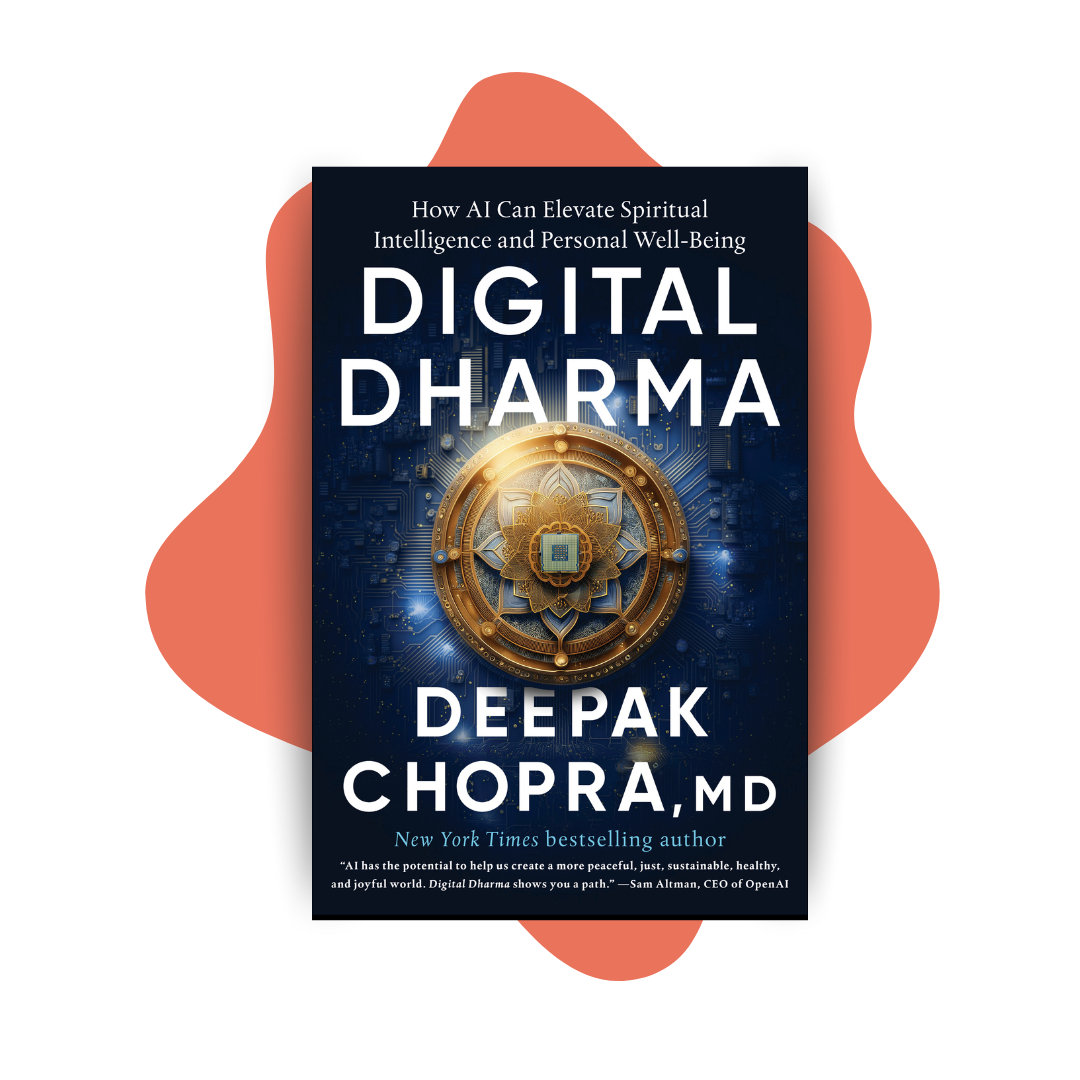If You Want a New Body, Here’s How.
When your mind and heart are truly open abundance will flow to you effortlessly and easily.
There has always been a craving to keep the body youthful and healthy, which is a natural reaction to how inevitable aging and disease have always been. Beauty treatments spring from the same motive as the most advanced medical research into anti-aging. Yet renewing the body isn’t just about our biology or about vanity and the worship of youth. If you take a different perspective, there is another way that is profound and practical at the same time.
What makes the difference comes down to the most basic question: What’s the point of having a body in the first place? All advanced life forms have a body to encase internal organs and shelter creatures from outside harm. But humans think about the body. We can see it any way we desire—as a temple for the soul, an evolutionary miracle a complex machine, the seat of pain and pleasure. There’s no limit, and the spectrum from body shaming to the ideal of a perfect body constantly surrounds us.
None of those models gets to the heart of the matter. Your body isn’t a machine, although that’s the prevailing model most people accept. Machines don’t have children, feel love (or anything else), and grow stronger the more you use them. While you are getting fit at the gym, the exercise equipment you are using is wearing out.
So which model should you substitute? In the Vedic tradition of India, the human body is a vehicle, like a boat taken on a long journey over the sea. Vehicles don’t take on meaning until you know what the journey is. At first glance, calling the body a vehicle seems obvious and not helpful. The journey from birth to death requires a body—so what?
The complexion of things changes radically if you look upon your body as a vehicle beyond birth and death, which is the Vedic perspective. Is this really possible? As a lump of matter that has a limited shelf life before it goes into decline, the human body seems much more like a burden or obstacle. It is the very essence of what happens in birth and dying. That’s why many Christian theologians focused on getting to Heaven after enduring this worldly vale of tears. Outside religious teachings, the vast majority of people would automatically separate the body from the soul.
The Vedic seers counter this with a powerful argument, declaring that our whole view of the body is based on a misunderstanding, a clouding of the mind known as klesha, that leads to fatal consequences. In everyday language, the five kleshas are.
- Ignorance (the inability to tell the real from the false)
- Egoism (identifying with “I,” the individual self)
- Attachment (clinging to certain things, the objects of desire)
- Aversion (rejecting other things, the objects of revulsion)
- Fear of death
These five sources of suffering are all mind-made. They don’t exist in your physical body—a liver or heart cell has no problems with ego or attachment. Cells are devoid of the fear of death; in fact, programmed death (biologically known as “apoptosis”) is part of a cell’s design to make way for new life.
Part of the ego’s agenda is to keep you from confronting your deepest fears, but they exist just beneath the surface and entangle you with the five kleshas. As the Vedic rishis saw it, getting entangled is totally unnecessary. What the mind has made, the mind can unmake. Let’s do this one klesha at a time.
- Ignorance (the inability to tell the real from the false)
If the first klesha is cleared up, it takes care of the other four; therefore, it is the most important. Ignorance is the product of mistaking yourself for an isolated being trapped in a physical body. “I am this body” is completely false. “I am in this body” is just as false. The reality is that the physical body is a process happening when consciousness morphs into the physical world. “I am consciousness itself” bursts the illusion created by ignorance.
- Egoism (identifying with “me,” the individual self)
Once the first klesha takes hold, creating isolation inside a physical body, the ego grows in importance. “I” is assigned the duty to survive inside the body, and a stream of desires pours out in response to pleasure and pain. The ego becomes a person’s identity. Instead of recognizing that “I am consciousness,” everyone believes in “I am my story, and I want the best story for myself that I can get.”
- Attachment (clinging to certain things, the objects of desire)
Once you identify with your story, some experiences are more desirable than others. The next step is to become attached to those desires. All the things you surround yourself with to feel more worthy and successful—a solid career, a nice house, money in the bank, etc.—become extremely hard to let go of. Possessing them is so personal that attachment comes to dominate your existence.
- Aversion (rejecting undesirable things, the objects of revulsion)
The opposite of attachment is aversion—we reject the things we don’t want as strongly as we cling to the things we do want. Aversion to physical pain is natural, but far more powerful is psychological aversion. If you broke your ankle on the playground as a child, that pain probably made no lasting impression. But if you were humiliated in school, an aversion to being humiliated again has a lasting grip, usually for a lifetime.
- Fear of death
The ultimate object of aversion is death, which is feared as a kind of annihilation. This klesha rounds out the repercussions of the first klesha, because if you identify with your body, you will identify with its death. Any time you protect your body from harm, grow anxious about aging, or feel threatened by illness, the shadow of the fear of death passes over you. The illusion is that “My body is gone” equates with “I will be gone at the same time.”
There is no need to confront one klesha at a time. All five kleshas are negated by a single realization, “I am consciousness itself.” Place your focus on the flow of creative intelligence, and it has the ability to clear the path for you. Your sense of self can escape the confinement of the physical body, which your ego has turned into a shield against reality.
The path to renewing the body is through consciousness. Will this also have practical benefits in terms of aging and disease? Absolutely, as thousands of studies on meditation and Yoga have proved. But the essence of the Vedic teaching is that you must begin with a new vision that centers on reality, not mind-made illusions. This is the crucial step, for which there is no substitute.
DEEPAK CHOPRA MD, FACP, FRCP, founder of The Chopra Foundation, a non-profit entity for research on well-being and humanitarianism, and Chopra Global, a whole health company at the intersection of science and spirituality, is a world-renowned pioneer in integrative medicine and personal transformation. Chopra is a Clinical Professor of Family Medicine and Public Health at the University of California, San Diego and serves as a senior scientist with Gallup Organization. He is the author of over 90 books translated into over forty-three languages, including numerous New York Times bestsellers. His 91st book, Total Meditation: Practices in Living the Awakened Life explores and reinterprets the physical, mental, emotional, relational, and spiritual benefits that the practice of meditation can bring. For the last thirty years, Chopra has been at the forefront of the meditation revolution. His latest book, Living in the Light co-authored with Sarah Platt-Finger. TIME magazine has described Dr. Chopra as “one of the top 100 heroes and icons of the century.” www.deepakchopra.com

